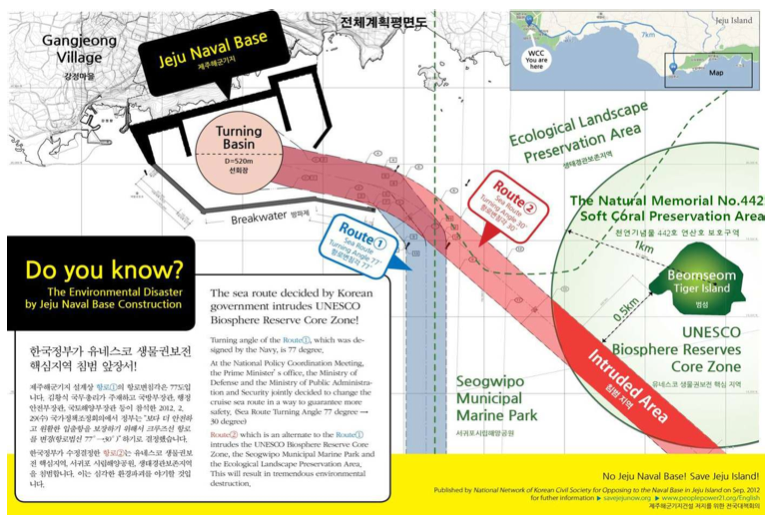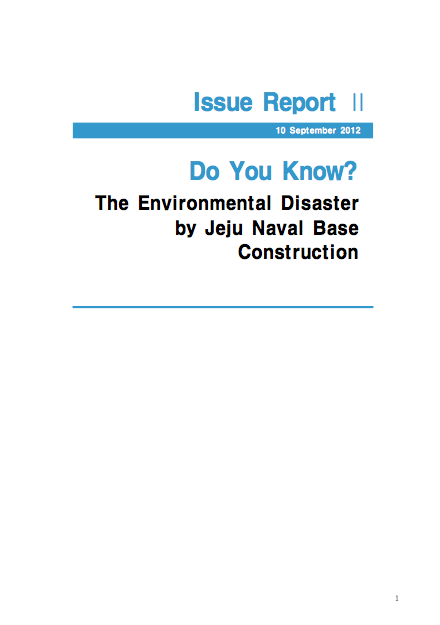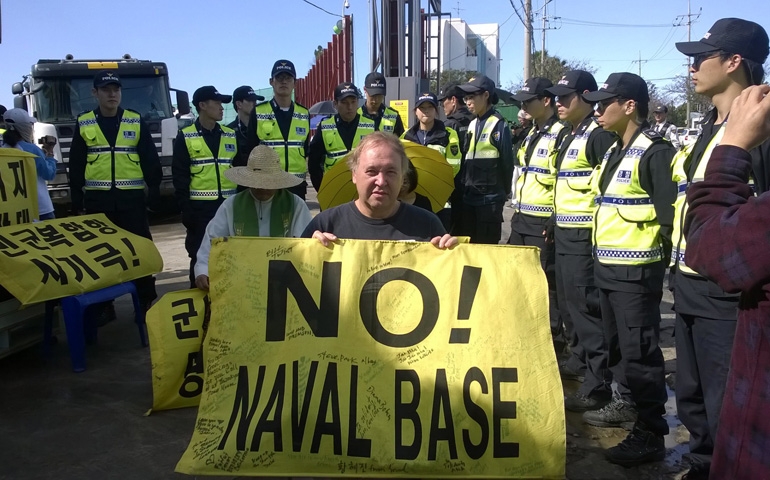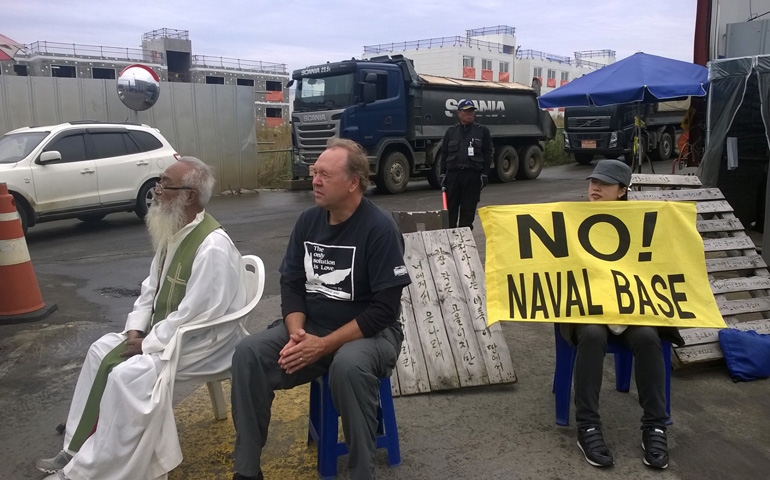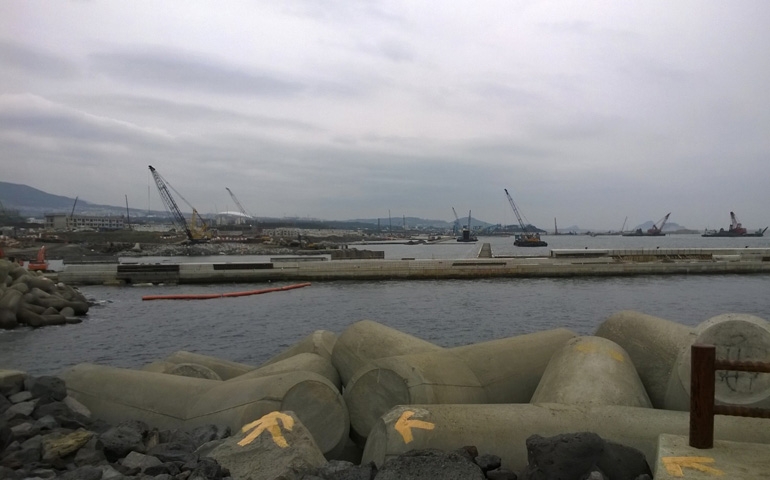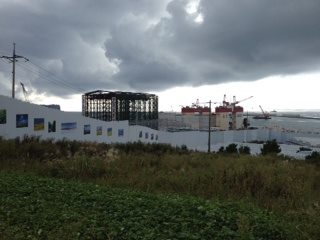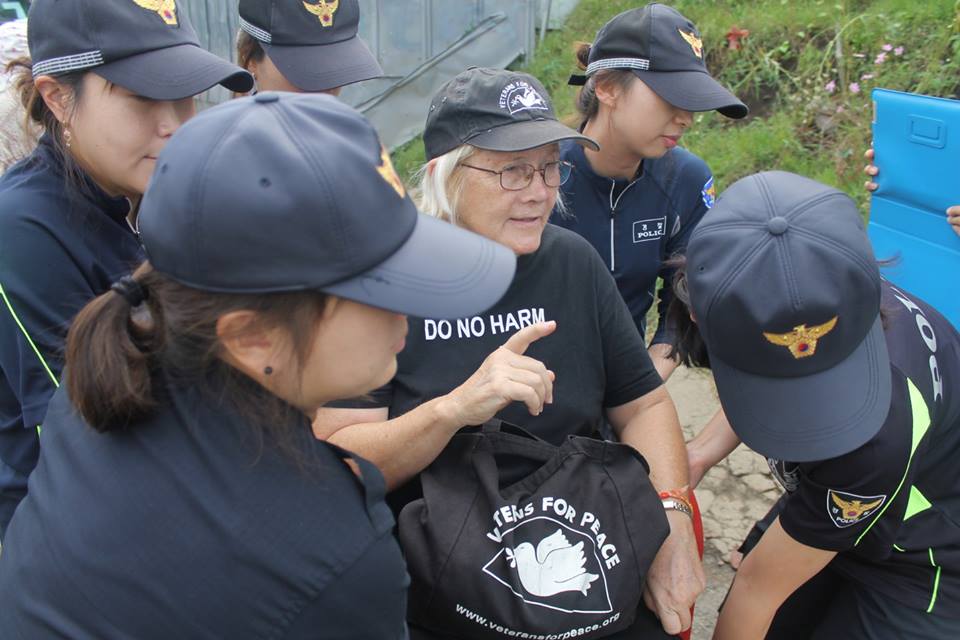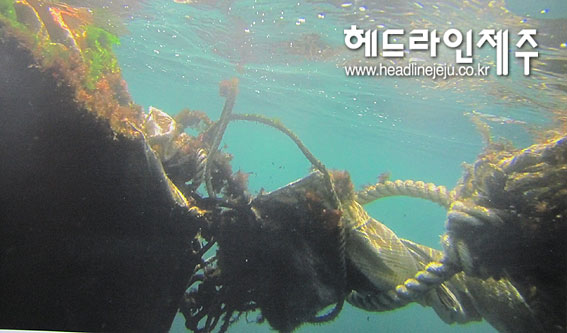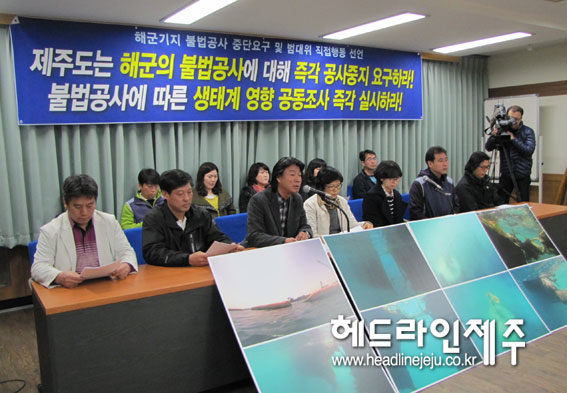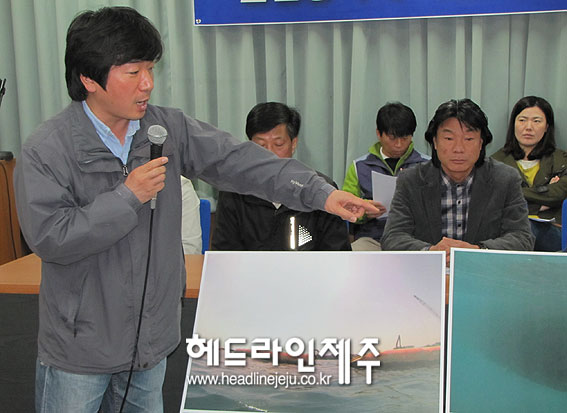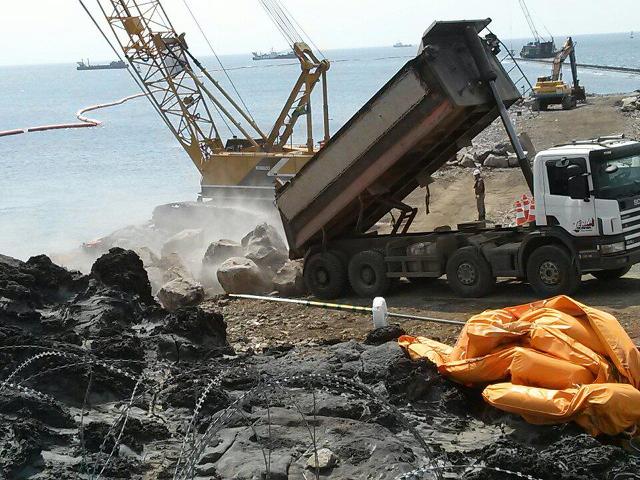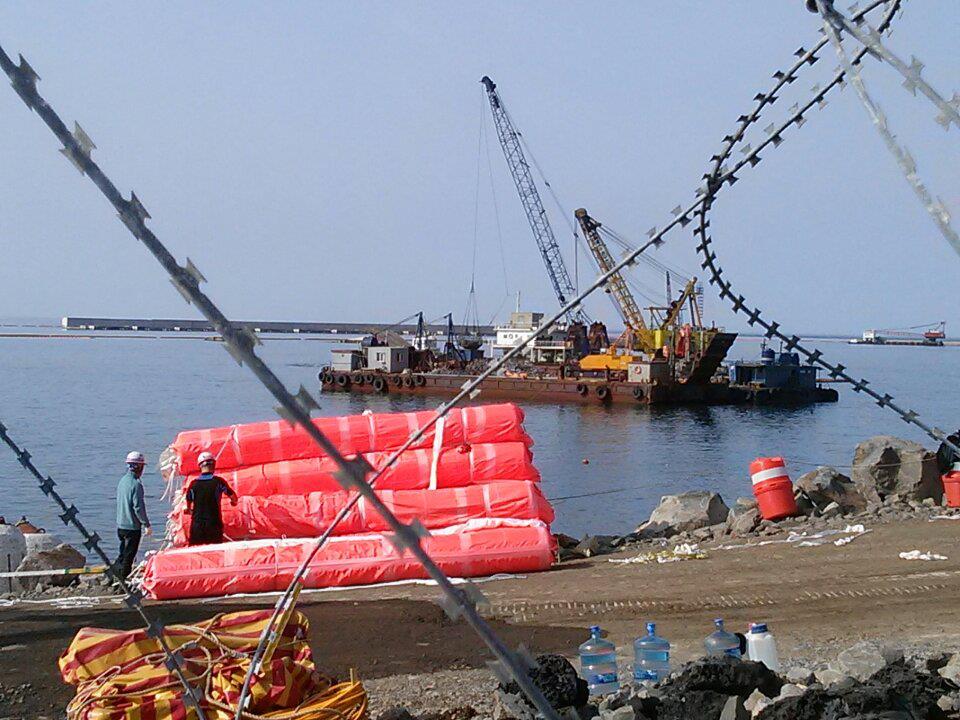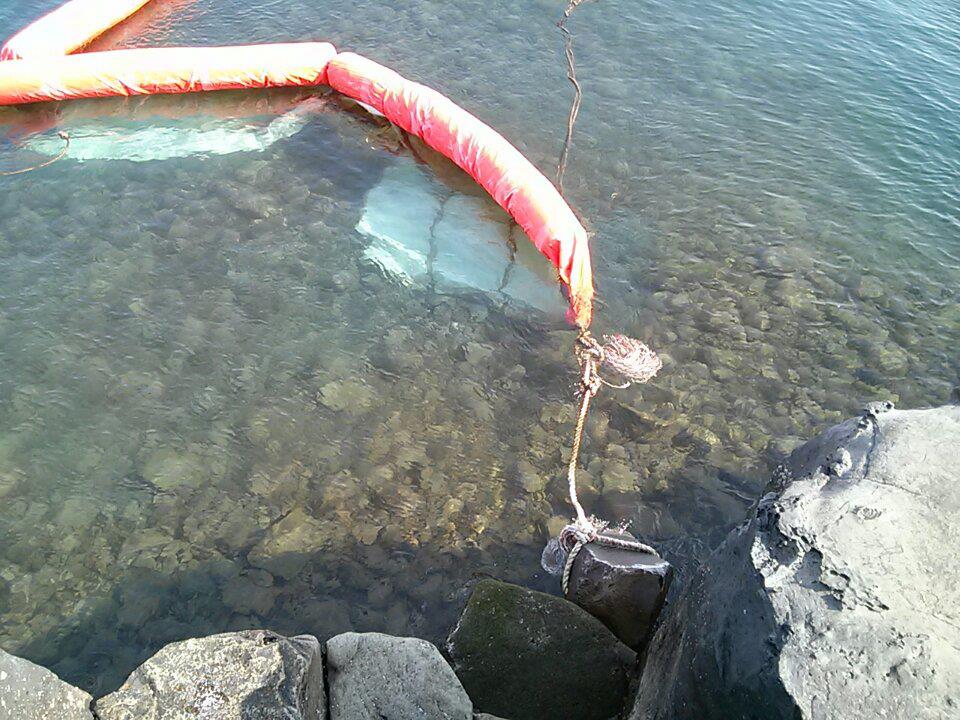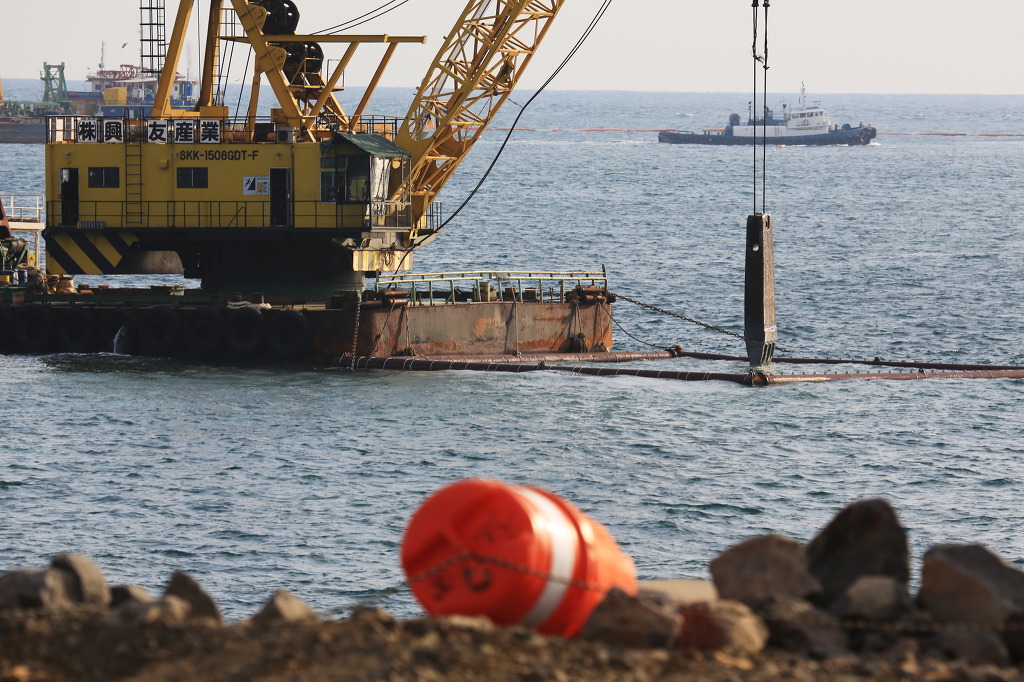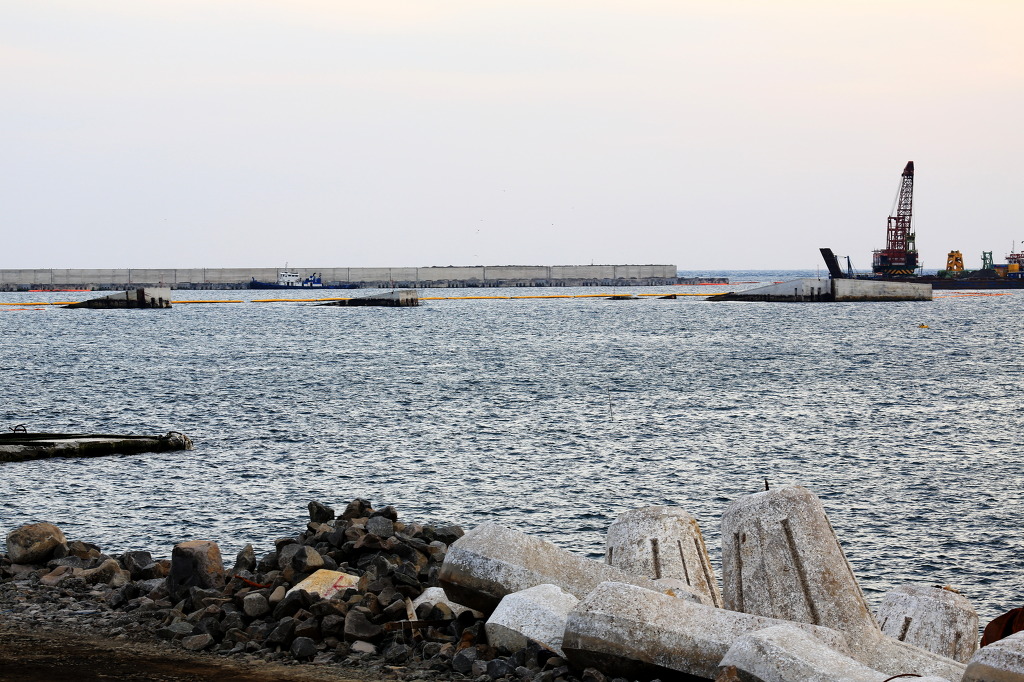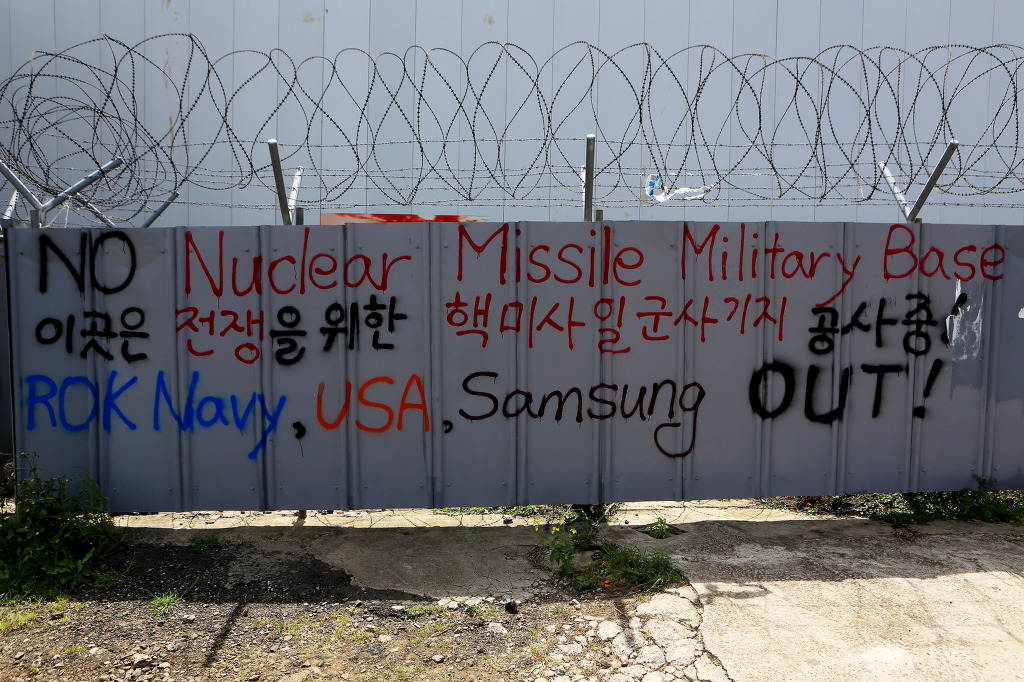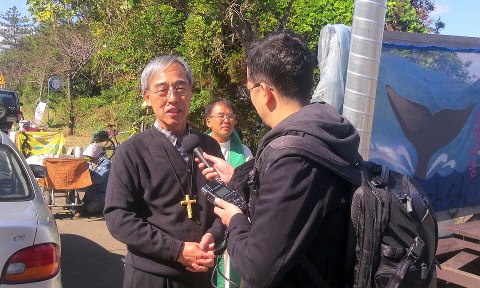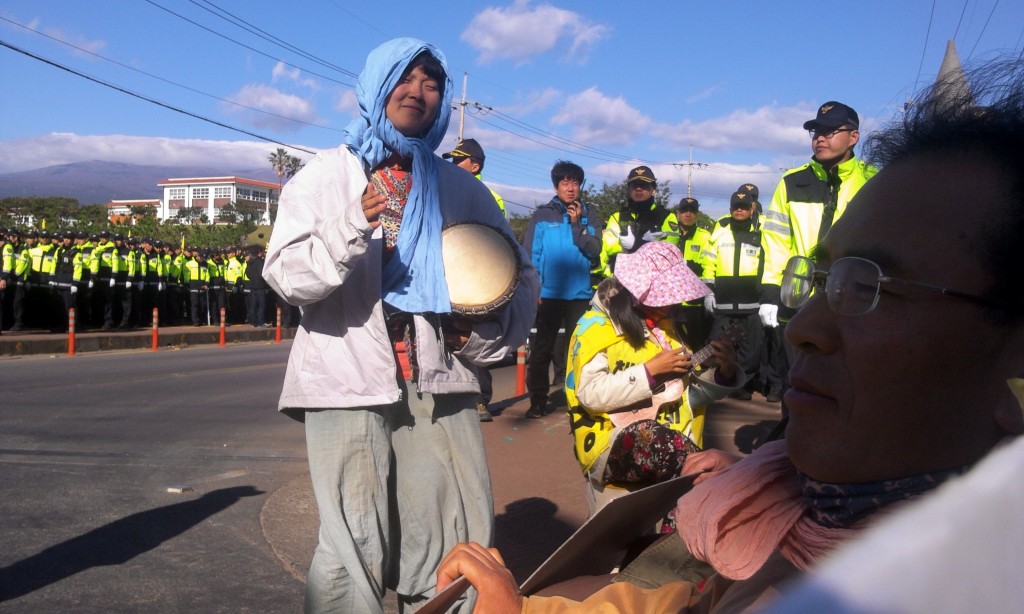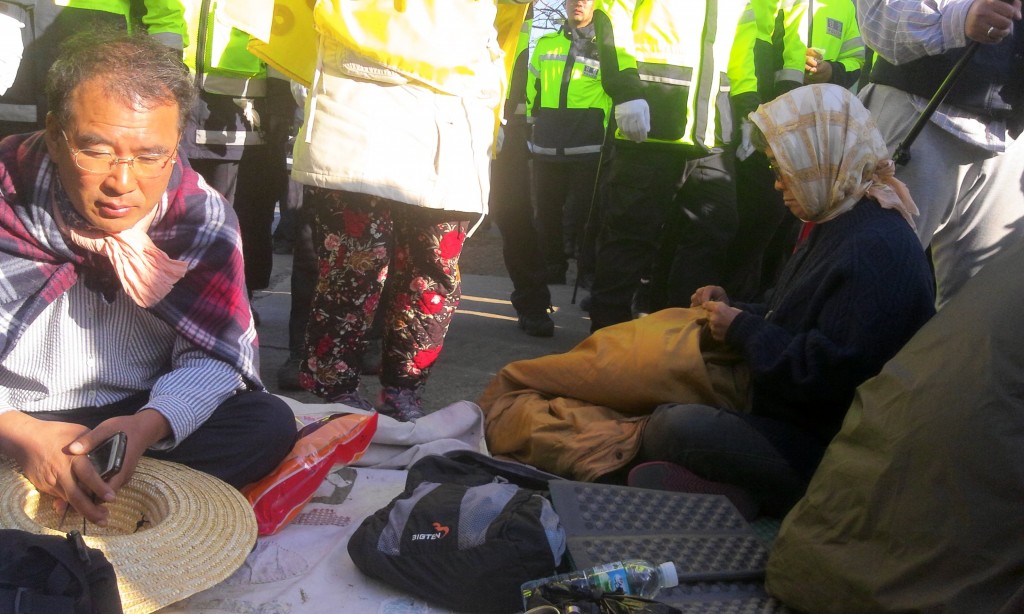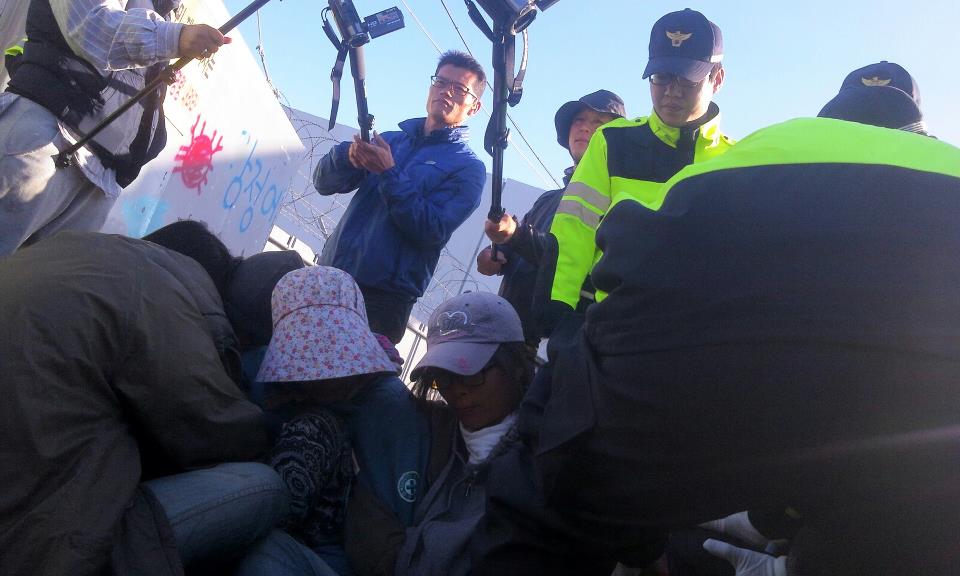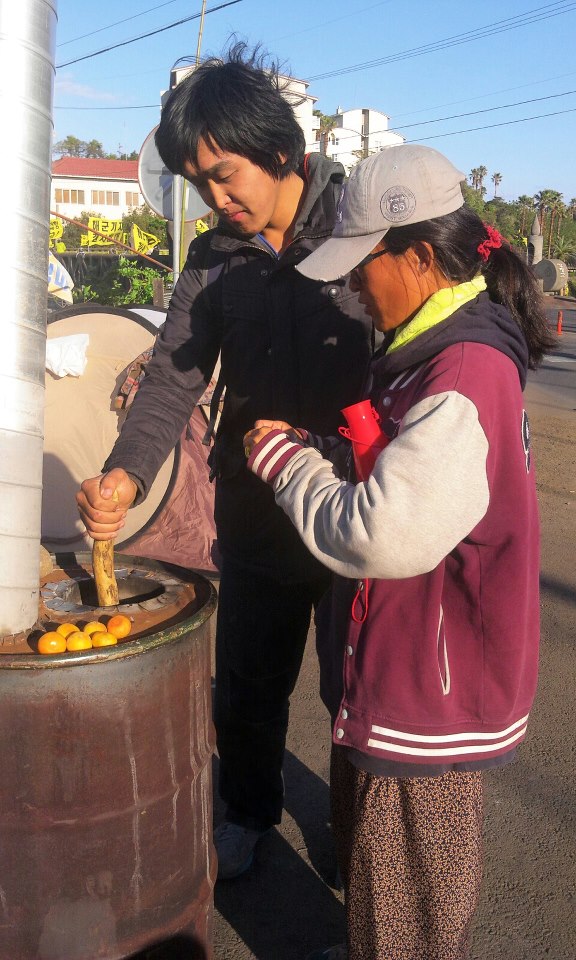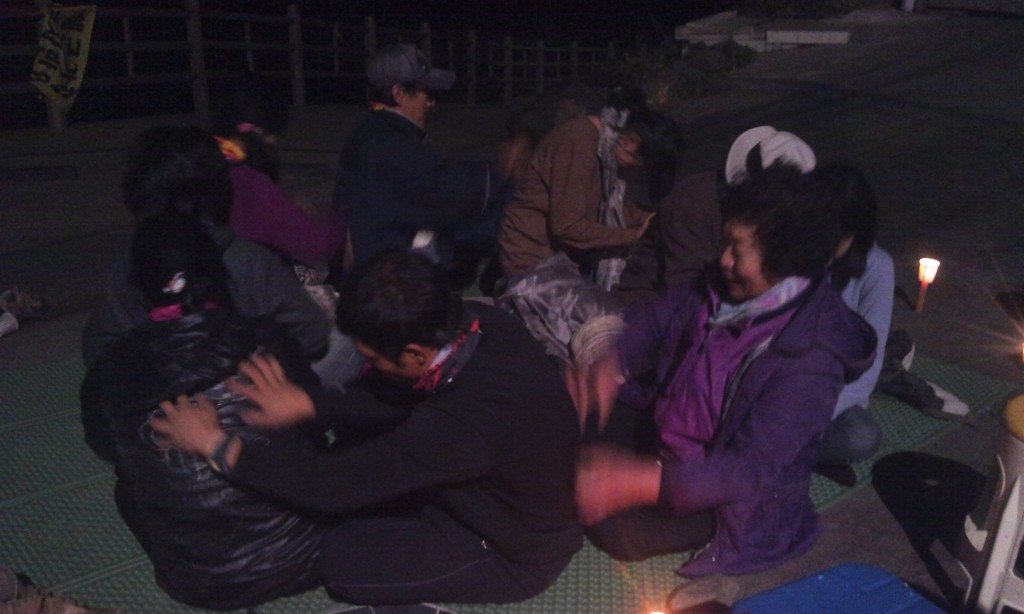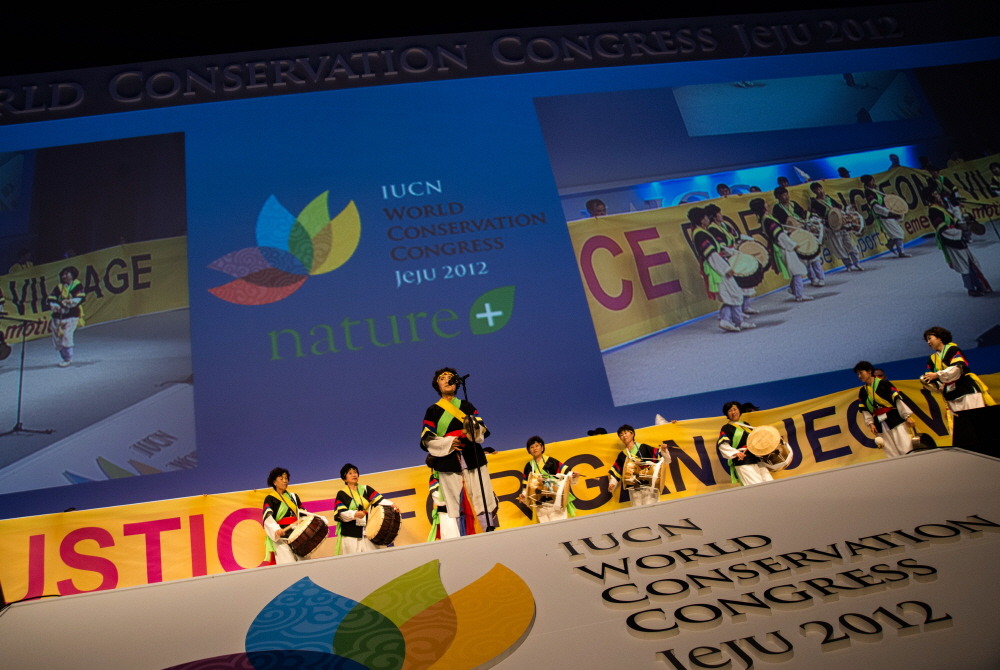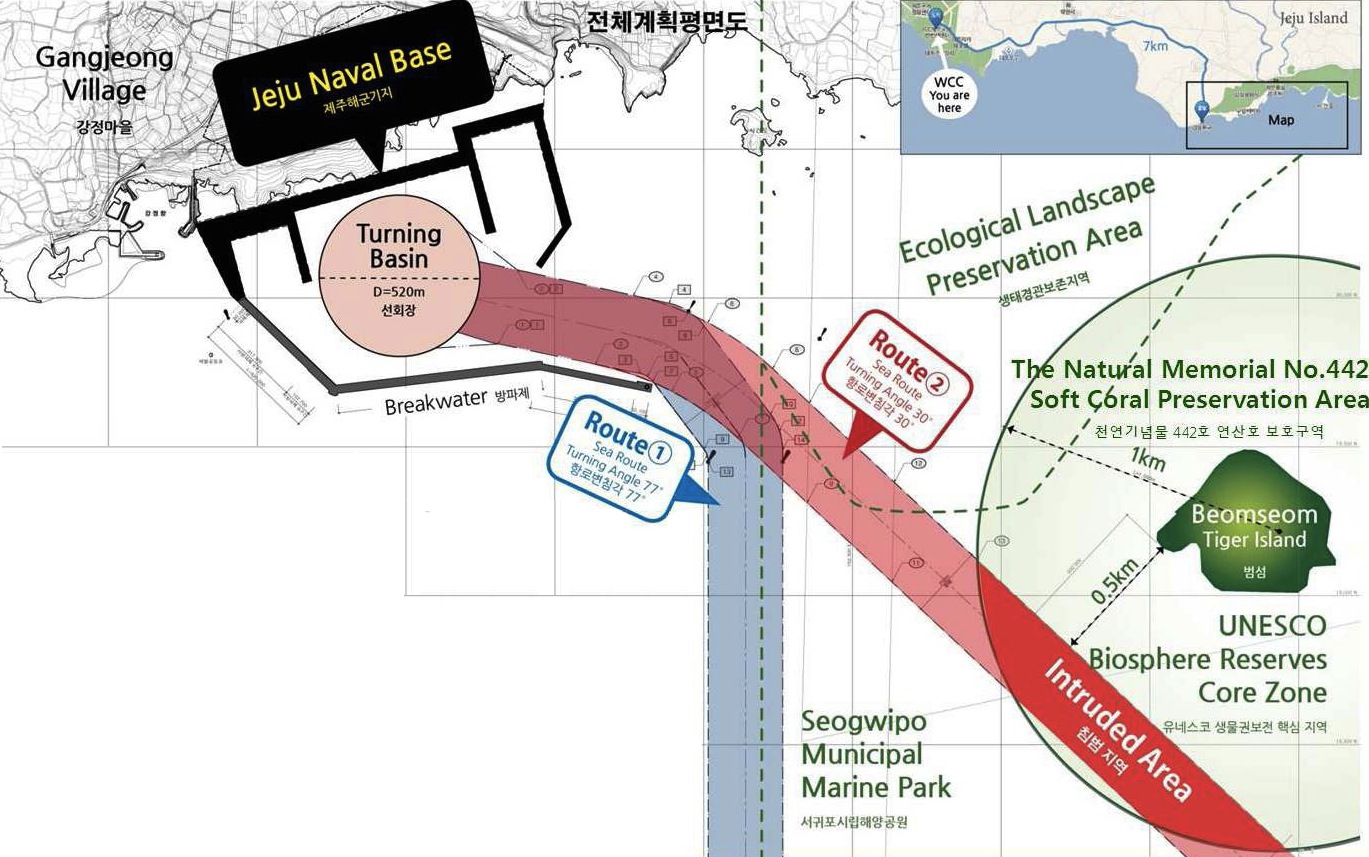The following statement with 131 signatories, is the 1st open letter mailed to the leadership of the International Union for the Conservation of Nature. It was originally posted here.
OPEN MEMO TO: All Leadership, the International Union for the Conservation of Nature (IUCN)
FROM: Undersigned Environmental/NGO/Academic Leaders
THE IUCN 2012 WORLD CONSERVATION CONGRESS (WCC), scheduled for September 6-15 at Jungmun Resort on Jeju Island, was apparently planned several years ago by IUCN leadership without full awareness of current circumstances on Jeju—circumstances that display values and behaviors exactly opposite to the historic goals of IUCN.
The IUCN describes the Congress as “the world’s largest and most important conservation event,” aiming “to improve how we manage our natural environment for human, social and economic development.” Nothing could be more diametrically opposed to sustaining those values than the environmental and social assaults now underway only minutes away, along the nearby coastline, and in the traumatized Gangjeong Village. That is where construction has begun on a huge new military base, rapidly devastating a region of rare beauty, vibrant soft-coral reefs, pure freshwater springs, numerous endangered species, and traditional sustainable cultures and villages, and where police actions are brutalizing local populations who attempt to oppose the development.
The undersigned believe it would be massively ironic, contradictory, and scandalous, for the IUCN to ignore the attacks on living nature, and on traditional sustainable culture, that are daily underway a few miles from the scheduled IUCN meeting. Holding a conference in the face of such nearby, ongoing devastation, would destroy the credibility of IUCN, and be an eternal embarrassment for all participants at the meeting.
We therefore insist that the leadership of IUCN demand that the government of South Korea immediately stop this appalling development, remove its military, and free the local population trying to recover the environment and traditional culture that is being actively destroyed. In lieu of that, IUCN should immediately cancel its meeting in Jeju, and reschedule in a timely manner, in another place with values that are aligned with the organization’s mission. Details follow.
Crimes Against Nature:
Five years ago, the South Korean government announced that it would begin blasting Gangjeong’s rare lava-rock coastline, the only rocky wetland on Jeju Island, to make way for a new naval base intended to berth South Korean and U.S. Aegis missile-carrying warships, a thinly veiled threat against China. The base project is located 1.7 km away from sacred Beom Islet (Tiger Isle), which is a UNESCO biosphere preserve.
Coastal blasting began in earnest in March 2012, despite continuous passionate protests from local Gangjeong residents. It has already transformed an extraordinary coastline into an ecological disaster area. Uniquely beautiful soft-coral reefs, with very high levels of native biodiversity, extend widely across the area, directly in front of the base project. They are now being aggressively destroyed. Environmentalist and actor Robert Redford recently reported on the 57 four-story-tall caissons poised to drop on miles of soft coral reefs.
The coastline features a single massive Andesite bed rock, with year-round fresh water streams and springs. Bubbling through the lava for millennia, these precious waters have now been contaminated by the dynamiting of the coastline. The blasting and construction are also shattering the rare ecosystem in places where fresh spring water mixes with sea water. The brackish water’s life-giving qualities are recognized by villagers, who call it “grandmother water.”
These places provide unique habitat for many endangered species, including the narrow-mouth toad (Kaloula borealis), which is, ironically, on the IUCN’s critical Red List! Other endangered species threatened by the destruction include the red-foot crab (Sesarma intermedium); the Jeju fresh water shrimp (Caridina denticulate keunbaei); and mollusks such as the Gisoogal godong (Clithon retropictus).
Another endangered species doomed by the development, are Jeju’s last 100 Indo-Pacific bottle-nosed dolphins (Tursiops aduncus) which are still visible in island coastal waters.
Crimes Against Humanity
Clearly, this base construction is not only a crime against nature, but a crime against humanity. In a single blow, the base will destroy not just ecosystems and endangered species, but also resilient livelihoods within a thriving traditional village. The reef, the farms and the spring water have provided for the local village for centuries. And yet, the government has razed many acres of tangerine farms, and removed people from their land and their reefs in order to make room for a military base.
The Los Angeles Times has reported: “The new base will subsume the picturesque harbor, and its security perimeter will shut out fishermen and women who for generations have fished for abalone, sea cucumber and brown seaweed.”
One “haenyo” (traditional woman sea diver) says that pollution from the naval base has already turned the clean seawater to gray, threatening the haenyos’ livelihoods. “The Naval base will destroy the natural resources. I see cranes and large machinery at the base. I can’t believe it.”
The villagers were recently notified that the government will be seizing more land to build housing for 600 military personnel who, with their families, will outnumber the 1,930 villagers. New businesses will open to service the newcomers: Big box stores will replace village gardens; parking lots will replace farms; bars and prostitution will replace Jeju’s women divers. Gangjeong, as it has miraculously existed for centuries, will be wiped off the face of the Earth.
According to a Jeju newspaper, the base controversy has caused increased suicide rates in Gangjeong. Last year, one villager drank pesticide in a failed attempt to kill himself. He said he couldn’t live with all the destruction.
Finally, this development is also a crime against democracy. Ninety-four percent of villagers voted against base construction in a recent referendum, but local wishes are ignored by the Korean government. The mayor of Gangjeong and fellow villagers have hosted numerous press conferences in Jeju City, citing continuing environmental violations by the construction crews. The Navy is never punished. Instead, the government sends hundreds of riot police to arrest protestors every day for holding prayer vigils at the gates to the construction site. They are charged with “obstruction of government activities.” The mayor himself was jailed for three months.
Our Demand
The undersigned strongly assert that it would be highly contradictory for the IUCN to ignore such startling social and environmental realities as described above, while it claims to convene global environmental leaders to protect and restore natural systems. If the 2012 World Conservation Conference proceeds as currently planned, it would permanently damage the credibility of IUCN, and be a major embarrassment for all participants. This situation must be faced, and stopped. To participate as if everything is fine will cast a black mark across the conference and all its attendees.
IUCN leadership must immediately demand that the Republic of Korea cease, at once, these unconscionable crimes against the Earth, humanity and democracy. If the government refuses, IUCN should postpone the conference and reschedule at another time and place consistent with IUCN’s urgent mission and stated values. This would be in keeping with IUCN statements on the prime necessity to act on behalf of survival of the Earth and culture.
Thank you for your attention.
EMERGENCY ACTION TO SAVE JEJU ISLAND
ORGANIZING COMMITTEE:
savejejunow@gmail.com
Christine Ahn
Global Fund for Women; Korea Policy Institute
Imok Cha, M.D.
SaveJejuNow.org
Jerry Mander
Foundation for Deep Ecology; Int’l. Forum on Globalization
Koohan Paik
Kauai Alliance for Peace and Social Justice
SIGNERS (AS OF JULY 10):
Maude Barlow
Food and Water Watch, Council of Canadians (Canada)
John Cavanagh
Institute for Policy Studies (U.S.)
Vandana Shiva, Ph.D.
Navdanya Research Organization for Science, Technology and
Ecology (India)
Douglas Tompkins
Conservation Land Trust, Conservacion Patagonica (Chile)
Anuradha Mittal
Oakland Institute (U.S.)
Meena Raman
Third World Network (Malaysia)
Walden Bello
Member, House of Representatives (Philippines)
Tewolde Berhan Gebre Egziabher
Environmental Protection Authority (Ethiopia)
Lagi Toribau
Greenpeace-East Asia
Mario Damato, Ph.D.
Greenpeace-East Asia
Debbie Barker
Center for Food Safety (U.S.)
Pierre Fidenci
Endangered Species International (U.S.)
Victoria Tauli-Corpuz
Tebtebba Indigenous Peoples’ Int’l. Centre for
Policy Research and Education (Philippines)
John Knox
Earth Island Institute (U.S.)
David Phillips
Int’l Marine Mammal Project, Earth Island Institute (U.S.)
Mary Jo Rice
Int’l Marine Mammal Project, Earth Island Institute (U.S.)
Bill Twist
Pachamama Alliance (U.S.)
Jon Osorio, Ph.D.
Chair, Hawaiian Studies, Univ. of Hawaii (U.S.)
Sue Edwards
Institute for Sustainable Development (Ethiopia)
Gloria Steinem
Author, Women’s Media Center (U.S.)
Medea Benjamin
Code Pink, Global Exchange (U.S.)
Randy Hayes
Foundation Earth (U.S.)
Noam Chomsky
Massachusetts Institute of Technology (U.S.)
Galina Angarova
Pacific Environment (Russia)
Bruce Gagnon
Global Network Against
Weapons and Nuclear Power in Space (Int’l)
Andrew Kimbrell
Center for Food Safety (U.S.)
Jack Santa Barbara
Sustainable Scale Project (New Zealand)
Renie Wong
Hawaii Peace and Justice (Hawaii)
Kyle Kajihiro
Hawaiʻi Peace and Justice/DMZ-Hawaiʻi (Hawaii)
Terri Keko’olani
Hawai’i Peace and Justice/DMZ-Hawai’i (Hawaii)
Wayne Tanaka
Marine Law Fellow, Dept. of Land & Natural Resources (U.S.)
(signing independently)
Tony Clarke
Polaris Institute (Canada)
Sara Larrain
Sustainable Chile Project (Chile)
John Feffer
Foreign Policy in Focus (U.S.)
Victor Menotti
International Forum on Globalization (U.S.)
Arnie Saiki
Moana Nui Action Alliance (U.S.)
Nikhil Aziz
Grassroots International (U.S.)
Lisa Linda Natividad
Guahan Coalition for Peace and Justice (Guam)
Rebecca Tarbotton
Rainforest Action Network (U.S.)
Kavita Ramdas
Visiting Scholar, Stanford U., Global Fund for Women (India)
Raj Patel
Institute for Food and Development Policy/Food First (U.S.)
Alexis Dudden
Author, Professor of History, Connecticut University (U.S.)
Timothy Mason
Pastor, Calvary by the Sea, Honolulu (U.S.)
Katherine Muzik, Ph.D.
Marine Biologist, Kulu Wai, Kauai (U.S.)
Claire Hope Cummings
Author, Environmental attorney (U.S.)
Ann Wright
U.S. Army Colonel, Ret., Former U.S. Diplomat (U.S.)
Buffy Sainte-Marie, Ph.D.
Educator, Singer-Songwriter (U.S.)
Lenny Siegel
Center for Public Environmental Oversight (U.S.)
Yong Soon Min
Professor, University of California, Irvine (U.S.)
Eugeni Capella Roca
Grup d’Estudi I Protecció d’Ecosostemes de Catalunya (Spain)
Jonathan P. Terdiman, M.D.
University of California, San Francisco (U.S.)
Evelyn Arce
International Funders for Indigenous Peoples (U.S.)
Brihananna Morgan
The Borneo Project (Borneo)
Frank Magnota, Ph.D.
Physicist (U.S.)
Delia Menozzi, M.D.
Physician (Italy)
Aaron Berez, M.D.
Physician (U.S.)
Begoña Caparros
Foundation in Movement: Art for Social Change (Uganda)
Antonio Sanz
Photographer (Spain)
Cindy Wiesner
Grassroots Global Justice (U.S.)
Gregory Elich
Author, “Strange Liberators” (U.S.)
Joseph Gerson, Ph.D.
American Friends Service Committee (U.S.)
Piljoo Kim, Ph.D.
Agglobe Services International (U.S.)
Peter Rasmussen
He-Shan World Fund (U.S.)
Wei Zhang
He-Shan World Fund (U.S.)
Harold Sunoo
Sunoo Korea Peace Foundation (U.S.)
Soo Sun Choe
National Campaign to End the Korean War (U.S.)
Angie Zelter
Trident Ploughshares, (UK)
Ramsay Liem
Visiting Scholar, Center for Human Rights, Boston College (U.S.)
Kerry Kriger, PhD
Save The Frogs (U.S.)
Marianne Eguey
Jade Associates, (France)
Claire Greensfelder
INOCHI-Plutonium Free Future (U.S.-Japan)
Laura Frost, Ph.D.
The New School (U.S.)
Chris Bregler, Ph.D.
New York University (U.S.)
David Vine
Assistant Professor, American University (U.S.)
Simone Chun
Assistant Prof., Gov’t Department, Suffolk U., Boston (U.S.)
Matt Rothschild
Editor, The Progressive magazine (U.S.)
Henry Em
Professor, East Asian Studies, NYU (U.S.)
Eric Holt-Gimenez
Institute for Food and Development Policy (U.S.)
Maivan Clech Lam
Professor Emerita of Int’l Law, CUNY (U.S.)
Mari Matsuda
Professor of Law, Richardson Law School, Univ. of Hawaii (U.S.)
Beth Burrows
The Edmonds Institute (U.S.)
Aileen Mioko Smith
Green Action (Japan)
Susan George, Ph.D.
Transnational Institute (The Netherlands)
Marianne Manilov
The Engage Network (U.S.)
SOUTH KOREAN SIGNERS
Kangho Song, Ph.D.
Leader, Save Our Sea Team, Gangjeong village
(Presently in prison for civil disobedience)
Youngdeok Oh
Korea Federation for Environmental Movement of Jeju
Ho Myong
Eco Horizon Institute
Jingu Yeo
Korean Environment Education Network
Myungrae Cho
Citizens’ Movement for Environmental Justice
Kyeongjo Park
Green Korea United
Yoonmo Yang
Film critic
(Imprisoned for civil disobedience for four months in 2011)
Stephen Wunrow, Martha Vickery
Publisher/editor of Korean Quarterly
Seonghwan Min
Korean Ecoclub
Youngsun Ji
Korea Foundation for Environmental Movements
(Friends of the Earth, Korea)
Youngsuk Pak
Korean Women’s Environmental Networks
Raegun Park
Human Rights Foundation, Saram
Mihyuk Kwon
Korean Women’s Association United
Sunghee Choi
Global Network Against Weapons and Nuclear Power in Space
(Imprisoned for civil disobedience for two months in 2011)
Giryong Hong
Jeju Peace Human Rights Center
Chuyoung Chang
Minbyun-Lawyers for a Democratic Society
Eunkyung Oh
Jeju Women’s Assocation
Gwisook Gwon
Jeju National University
Hyekyoung An
Director, Jeju Women’s Film Festival
Jeonghae Park, Ph.D.
The Academy of Korean Studies
Gilchun Koh
Jeju artist
Misun Kang, Ph.D.
Artist
Jungjin Lee
Artist
Hyungtae Kim
Catholic Human Rights Committee
Hunjung Cho
Chun Tae-Il Foundation
Giyoung Hyun
Jeju People on Mainland who Love Gangjeong
Hongsik Kim
Jeju People on Mainland who Love Gangjeong
Moonheum Yang
Jeju People on Mainland who Love Gangjeong
Sangsoo Heo
Jeju People on Mainland who Love Gangjeong
Chansik Park
Jeju People on Mainland who Love Gangjeong
Youngjin Kim
Korea Democratic Street Venders Confederation (KDSC)
Yoonjae Cha
Masan YMCA
Boowon Nam
National Council of YMCAs of Korea
Geunyeom Chang
Peace Ground
Wooksik Cheong
Peace Network
Hyunbach Chung
People’s Solidarity for Participatory Democracy
Regina Pyon
Korean House for International Solidarity
Hyangyoon Mee
The Korean Council for the Women Drafted
for Military Sexual Slavery by Japan
Rev. Haehak Lee
The National Council of Churches in Korea
Committee of Justice and Peace
Hyesook Yeo
Women Making Peace
Youngjun Choi
Workers’ Solidarity All Together
Yeook Yang
World Without War
Jungmin Choi
World Without War
 This issue of the CCAO e-bulletin we are focusing on the Jeju Island off of South Korea. Known for its incredible biodiversity, God’s Creation on Jeju Island is threatened with plans to build a military base that will most likely destroy the fragile coral reef ecosystem, contaminate food and water sources in the Gangjeong community, and harm their local economy and livelihoods. Pollution from toxic chemicals, destruction of fragile ecosystems, and a large presence of military personnel are the biggest concerns. Gangjeong, the site of the proposed base, is surrounded by a biosphere reserve and three UNESCO World Heritage Sites due to the ecological significance of the region. Big interests from corporations, foreign and domestic militaries, and politicians have high stakes in seeing this project go forward.
This issue of the CCAO e-bulletin we are focusing on the Jeju Island off of South Korea. Known for its incredible biodiversity, God’s Creation on Jeju Island is threatened with plans to build a military base that will most likely destroy the fragile coral reef ecosystem, contaminate food and water sources in the Gangjeong community, and harm their local economy and livelihoods. Pollution from toxic chemicals, destruction of fragile ecosystems, and a large presence of military personnel are the biggest concerns. Gangjeong, the site of the proposed base, is surrounded by a biosphere reserve and three UNESCO World Heritage Sites due to the ecological significance of the region. Big interests from corporations, foreign and domestic militaries, and politicians have high stakes in seeing this project go forward. Columbans, in particular Fr. Pat Cunningham, have been involved with this struggle for some time now- as have other Catholic orders, faith traditions, environmentalists, and peace activists through the Save Jeju Now Coalition. The coalition has been organizing the last six years to oppose the naval base construction. Read more about the coalition efforts and the big interests behind the base.
Columbans, in particular Fr. Pat Cunningham, have been involved with this struggle for some time now- as have other Catholic orders, faith traditions, environmentalists, and peace activists through the Save Jeju Now Coalition. The coalition has been organizing the last six years to oppose the naval base construction. Read more about the coalition efforts and the big interests behind the base. As people of faith we are called to protect God’s precious gift of Creation and respect the human dignity and worth of every person. The Jeju Island Naval Base construction threatens unique and fragile ecosystems, the traditional life of Gangjeong villagers, and peace in South Korea’s “Island of Peace.” Click here to learn more and find a sample letter to send to the Korean Ambassador.
As people of faith we are called to protect God’s precious gift of Creation and respect the human dignity and worth of every person. The Jeju Island Naval Base construction threatens unique and fragile ecosystems, the traditional life of Gangjeong villagers, and peace in South Korea’s “Island of Peace.” Click here to learn more and find a sample letter to send to the Korean Ambassador.